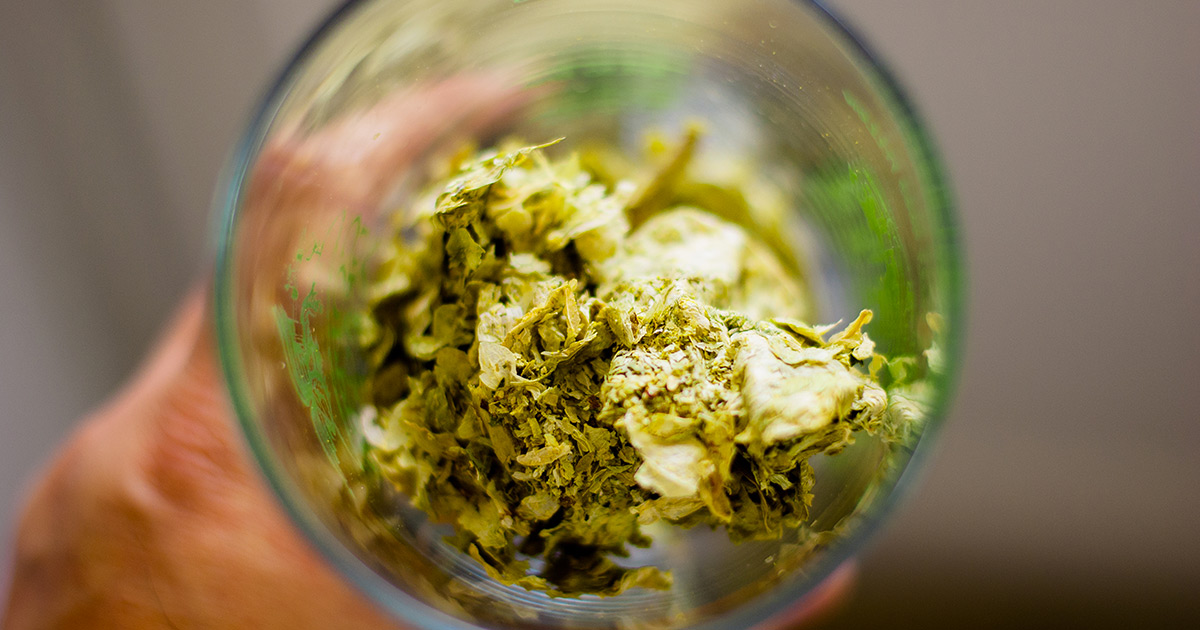Breaking Down the Science of Dry Hopping and its Effects on Bitterness
With brewers jumping on the dry hopping bandwagon these days, questions surrounding the process and its effects on beer bitterness are on tap and up for discussion. Dr. John Paul Maye, technical director at Hopsteiner, presented a seminar on the topic at the Craft Brewers Conference in Washington, D.C. last month. As a seasoned scientist in the industry and beer brewing enthusiast, Dr. Maye brings 24 years of experience in working closely with his company to develop the hottest new varieties of hops on the market today.
Dr. Maye shared his insights and experience to answer some of the top questions asked at his seminar. And, no, you don’t have to brush up on your chemistry. You will, however, get a better understanding of dry hopping.
Dr. Maye, can you explain how dry hopping causes the bitterness in beer to change?
Dry hopping can make beer less bitter or more bitter, depending on your starting IBUs (International Bitterness Units) and the amount of hops you use when dry hopping. This is due to the change in hop acid composition that takes place when you dry hop. Isoalpha acids, which are not extremely soluble, are responsible for giving beer its bitterness. When you dry hop a high IBU beer, for example, the hop pellets absorb and remove significant amounts of those isoalpha acids and add humulinones and alpha acids, which are soluble and less bitter. This change in hop acid composition can change the bitterness intensity of the beer.
Can you tell us why the International Bitterness Unit test method doesn’t work for dry hopped beers?
The IBU method was developed to measure the bitterness in beer during the brewing process. Since the test was designed to specifically measure isoalpha acids contained in beer – and not any other acids, such as humulones and alpha acids – the results from testing on dry hopped beers will not be in line with sensory perception. For this reason, the IBU test method doesn’t work for dry hopped beers.
How do the characteristics of a specific variety of hops reduce or improve beer foam?
Dry hopping can change beer foam for the worse or for the better. It really depends on the variety of hops you use and the contact time. The longer the hops sit on the beer, the greater the reduction in beer foam.
We believe the quality of beer foam depends on the concentration of fatty acids contained in the hop variety used. The higher the fatty acid concentration, the worse the foam. There’s definitely an appeal to having good foam and lacing. Ales, for example, are known for their creamy foam, whereas lagers have a more crisp, bubbly foam. The trick to creating the different foam styles is the type of gas used in the process. For example, to get a creamy foam, brewers will use nitrogen; or, for bigger bubbles, they will use carbon dioxide.
It’s understood that dry hopping can increase a beer’s pH. Can that increase in pH hurt the microbiological stability of the beer?
Yes, dry hopping can increase the beer’s pH, and higher pH beverages traditionally can increase the risk of bacterial growth. However, because dry hopped beers contain high concentrations of hop acids – like alpha acids, which are extremely antimicrobial – the risk of bacterial contamination is extremely low to non-existent.
Experience Dr. Maye’s podcast here to learn more about dry hopping and its effects on beer bitterness.

